Youtube video
https://www.youtube.com/watch?v=jl2DYoV1-38&t=11s&ab_channel=SalisParts
Welcome to Salis Parts
Youtube video
https://www.youtube.com/watch?v=jl2DYoV1-38&t=11s&ab_channel=SalisParts
a question that is sometimes asked: are all BMW inner Bowden cables provided with a (Teflon / PTFE) coating?
The answer is: no, they are not coated, however, all cables have a POM sleeve inside which is self lubricating.
POM = Polyoxymethylene or Polyacetal
List of 6 Volt and 12 Volt light bulbs for the R24 - R27, R51/2 - R68 and R50 - R69S models

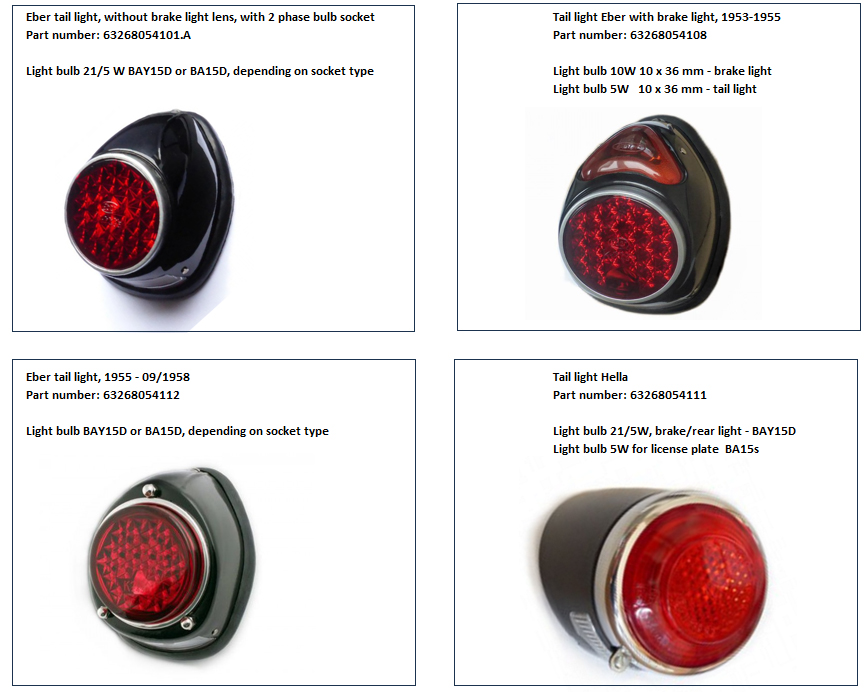
Wiring diagram for the system with an electronic voltage regulator P/N 12321354758H
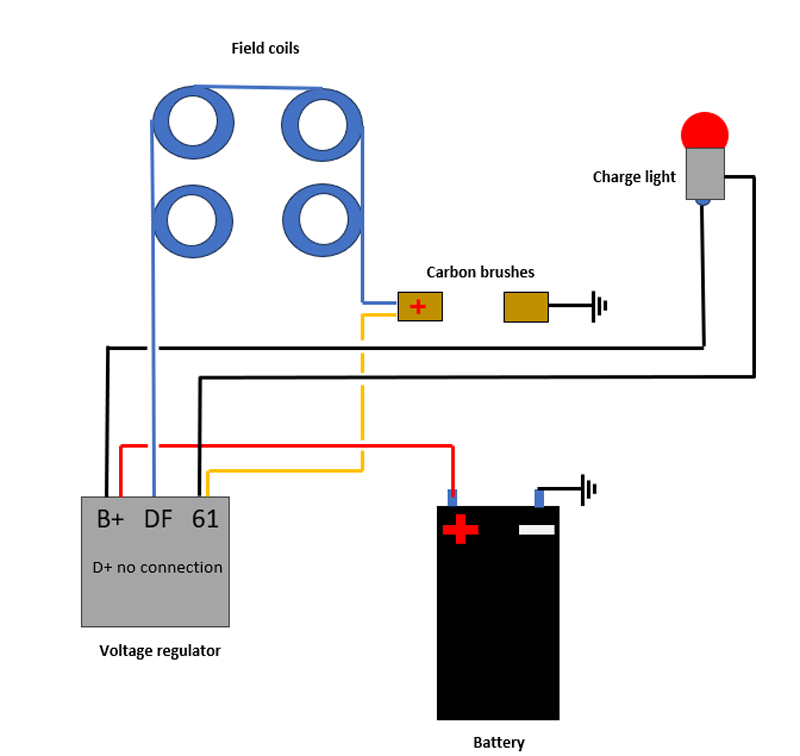
The correct functioning of a capacitor can be measured with (for example) a FLUKE multimeter.
The value specified by the manufacturer is 0.22 μF (microfarad). Over time, a capacitor's performance can be expected to decline.
The left photo shows a broken capacitor: the measured value is 0.131 nF (nanofarad) = 0.000131 μF
The right photo shows a properly functioning capacitor: the measured value is 0.249 μF. This is 13% higher than the specified value, but this does not affect proper operation. The value specified by the manufacturer is a chosen ideal value for the expected average engine rpm. This value is therefore somewhat arbitrary. At a lower value / rpm the contact points will burn in on one side, at a higher value / rpm this will happen on the other side.
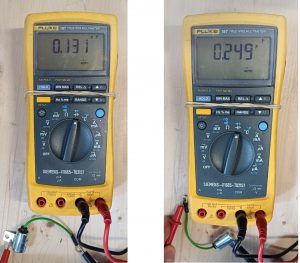
Since not everyone has such an expensive multimeter, there is an alternative method to get an impression of the operation of the capacitor. However, this method does not guarantee a correct measurement. See the steps below:
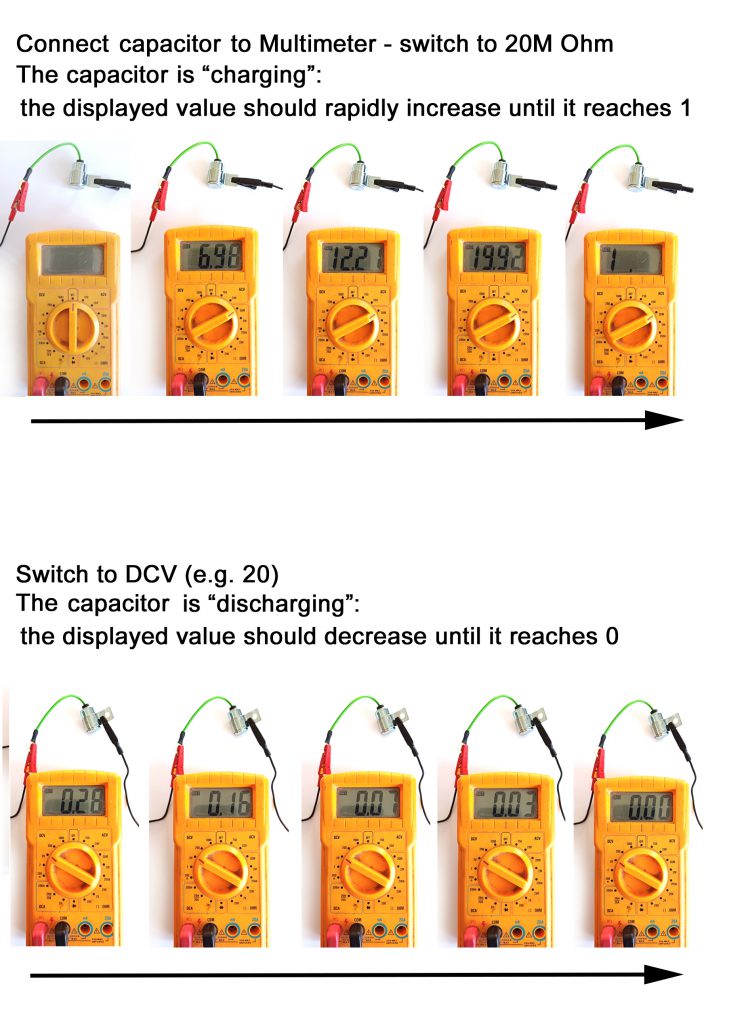
The table below shows the radial clearance specifications for all bearings used on the R24 - R69S models
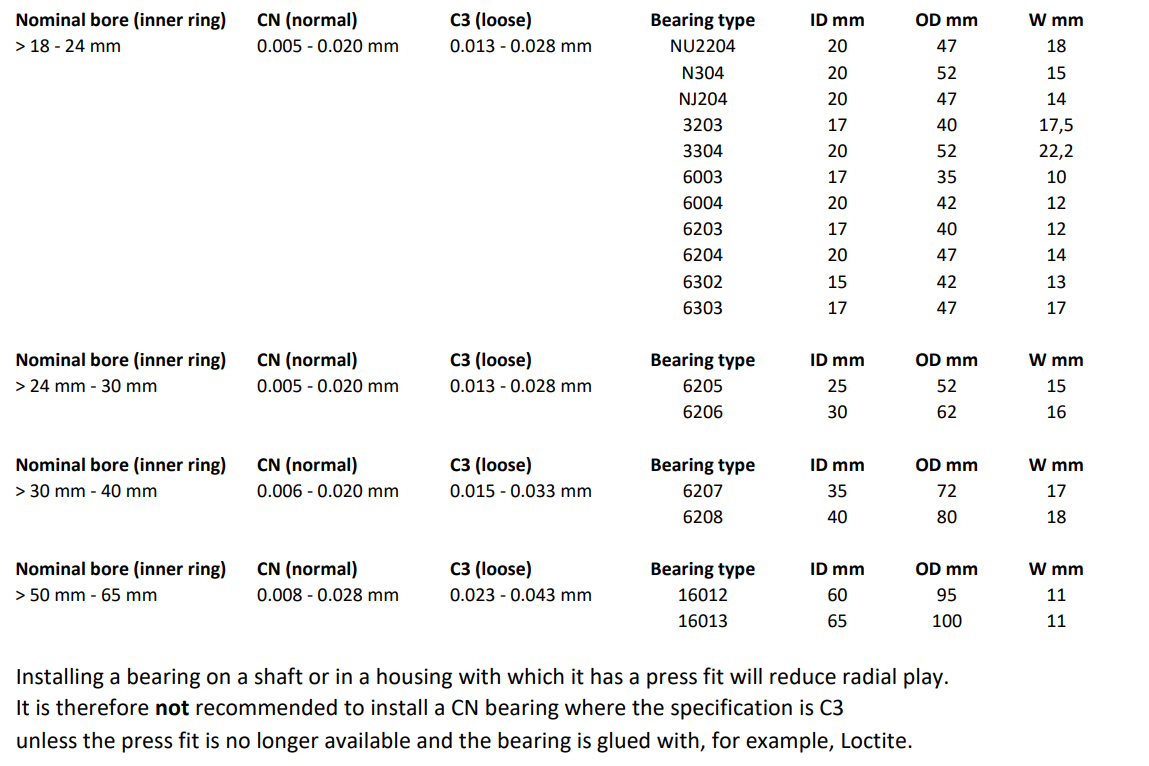
A comprehensive list of special and generic tools
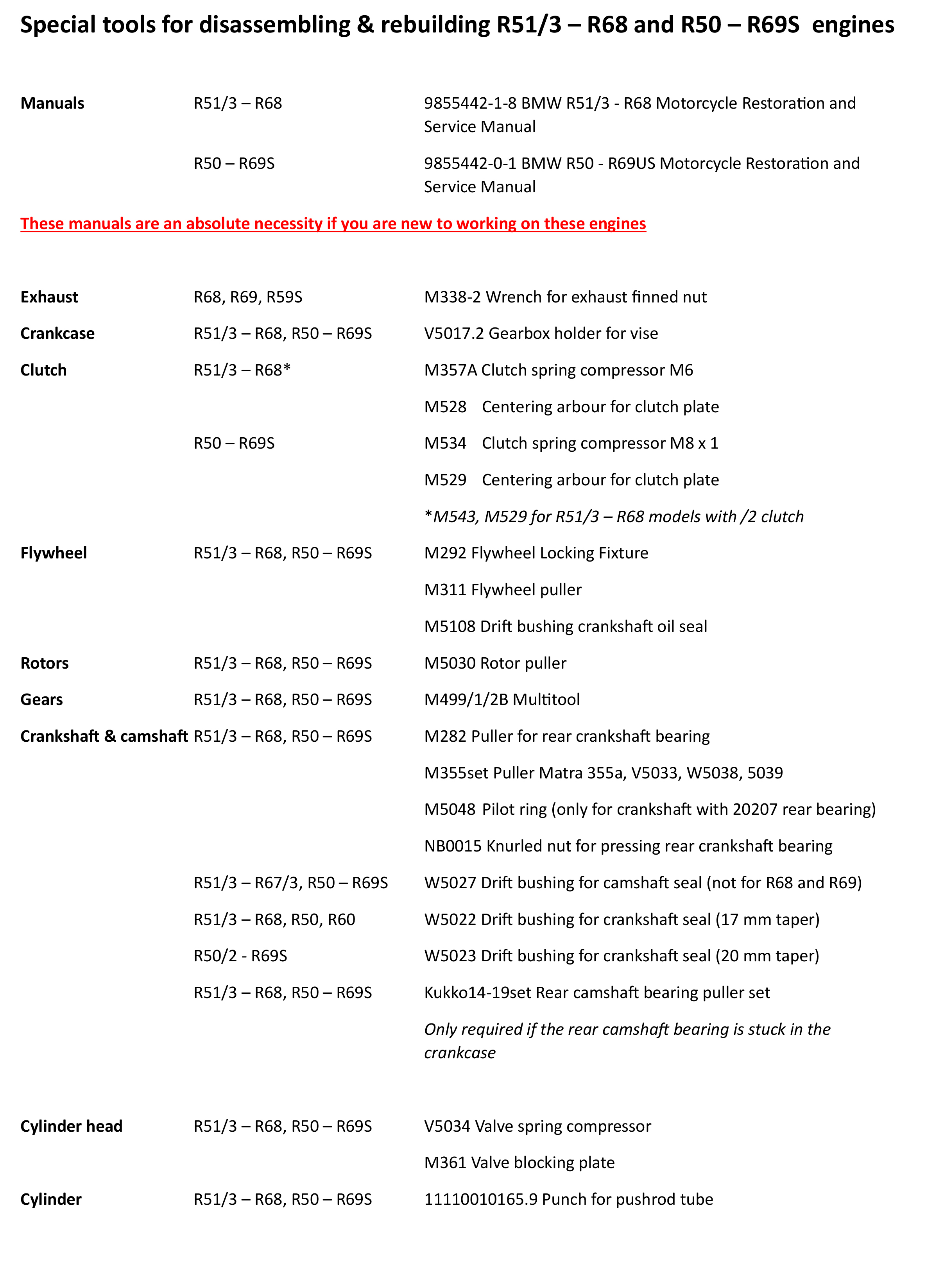
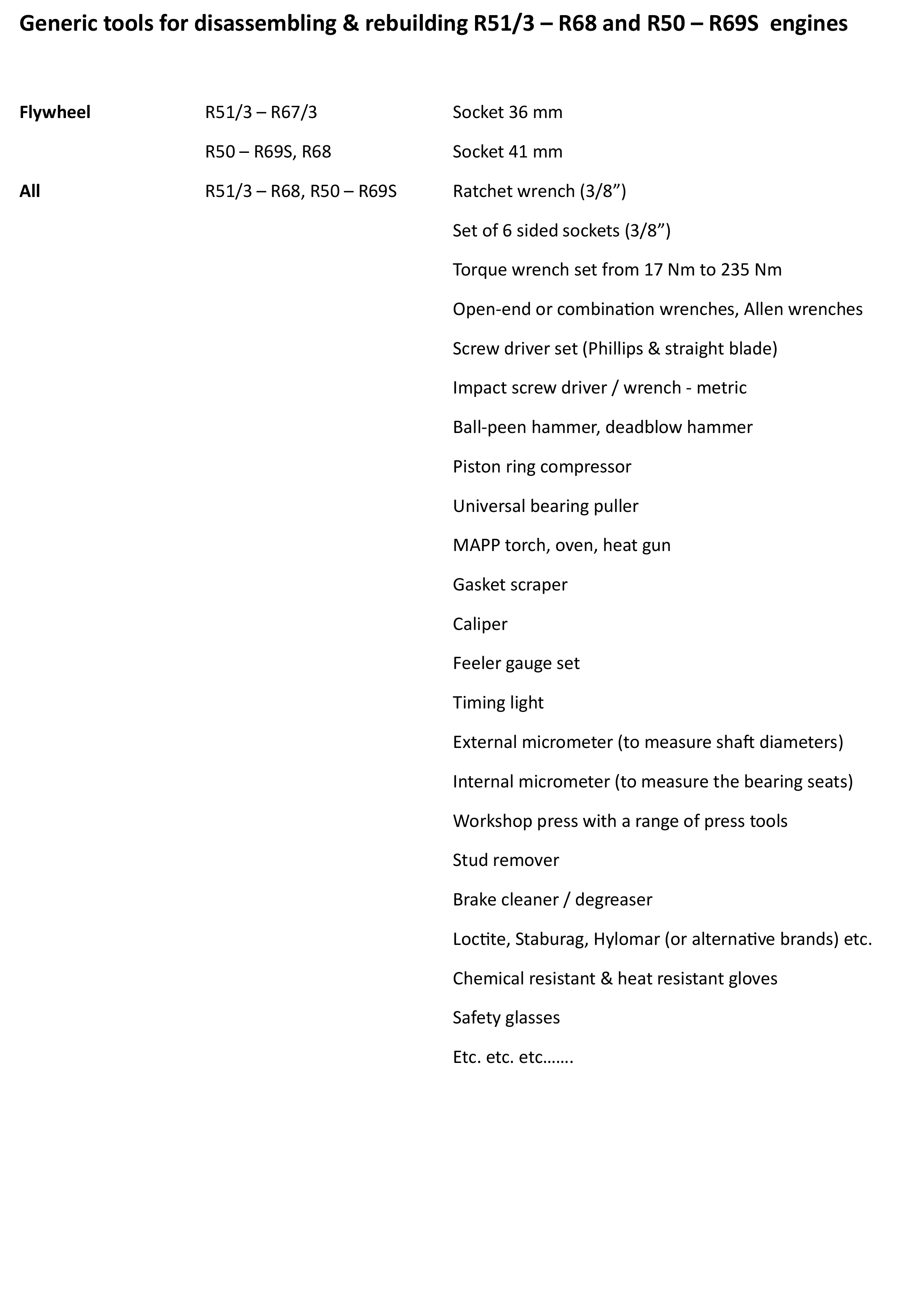
It's a wide spread misconception that pistons must be round / cylindrical. The opposite is true,
This is a new Kolbenschmidt R27 piston 68.50 mm:
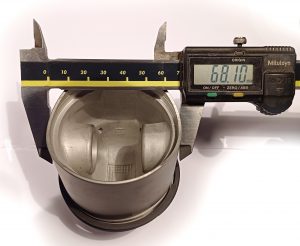
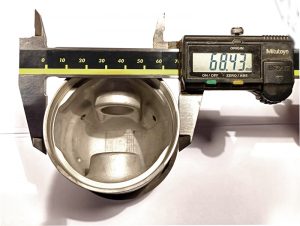
From the Internet:
Profile: If you roll a piston across a flat surface, you’ll notice it doesn’t roll in a straight line. This characteristic is called profile. Aluminum conducts heat significantly, so pistons are designed with a taper. The top of the piston (near the crown) has a smaller diameter than the bottom (near the skirt). The skirt itself is shaped like a barrel. This taper allows the piston to expand as heat is applied, preventing it from binding in the cylinder bore. The degree of taper is carefully calculated to avoid issues like scuffing or seizure due to heat expansion.
Ovality: Pistons aren’t perfectly cylindrical either. They’re deliberately made oval. If you measure the diameter of a full-skirted piston from an older air-cooled engine, you’ll find it’s slightly greater front-to-back than side-to-side (parallel with the wrist pin). This oval shape accommodates the varying temperatures near the dome and skirt of the piston, ensuring proper expansion without binding.
So, while a piston isn’t perfectly round, its sophisticated design optimizes performance and durability in the demanding environment of an internal combustion engine.
The only difference between the Denfeld en Pagusa saddle is the saddle deck.
There are small differences between the saddle deck frames: the shape of the frame and the front threaded bolt.
The Pagusa saddle bolt it is a bit longer and has a spacer so that the front of the saddle deck sits +- 1.5 cm higher compared to the Denfeld saddle deck.
The grain texture of the Denfeld rubber saddle deck surface is finer than the Pagusa grain texture. There is no quality difference
All other parts are the same: subframe, Z-bracket, rubber spring, spring stop piece, mounting hardware.
Info Mark Huggett:
Post 22 June 1999:
BMW specified "Pagusa" under that number which is also confirmed in the factory parts listing which I have a copy of.
BMW drew about 60% of all the saddles from Pagusa (I've written about this subject many times in the restoration tips).
The Denfeld saddles also fit, but were mainly aftermarket. You can even see the outline of the "Pagusa" logo in the exploded diagrams in the original BMW parts catalogues.
Post 21 April 1999:
I always maintained that BMW never used the Denfeld rubber saddles as OEM until just recently when I received the factory specifications and cost analysis from way back then.
What a surprise. Basically BMW had a policy of having at least 3 suppliers of most components, the main one having at least 70% of the stake and the other 2 as basically an insurance.
Pagusa (the original Patent Gummi Sattel) shared the lions heart whereas Denfeld and Franke shared the dregs.
Info Craig Vechorik (post vintagebmw.org/forum on Nov 27th, 2023)
Re: Denfeld vs Pagusa?
Unread post by vechorik1373 » 27 Nov 2023 17:33
My understanding is, (I could be wrong, I never worked for Butler & Smith) that all the 1955 - 1969 bikes exported to the USA came with (ugly, in my opinion) bench seats. Solo seats were offered as an accessory by Butler & Smith, but they were Denfeld seats, not Pagusa. In Europe, the bikes were sold with Pagusa solo seats.
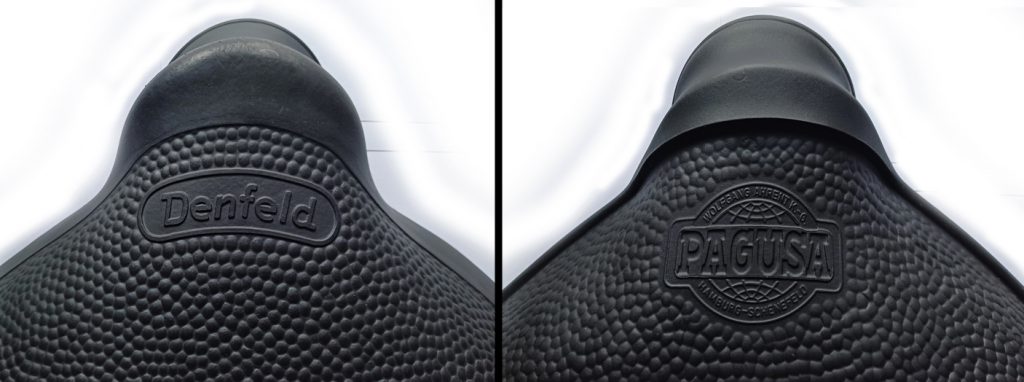
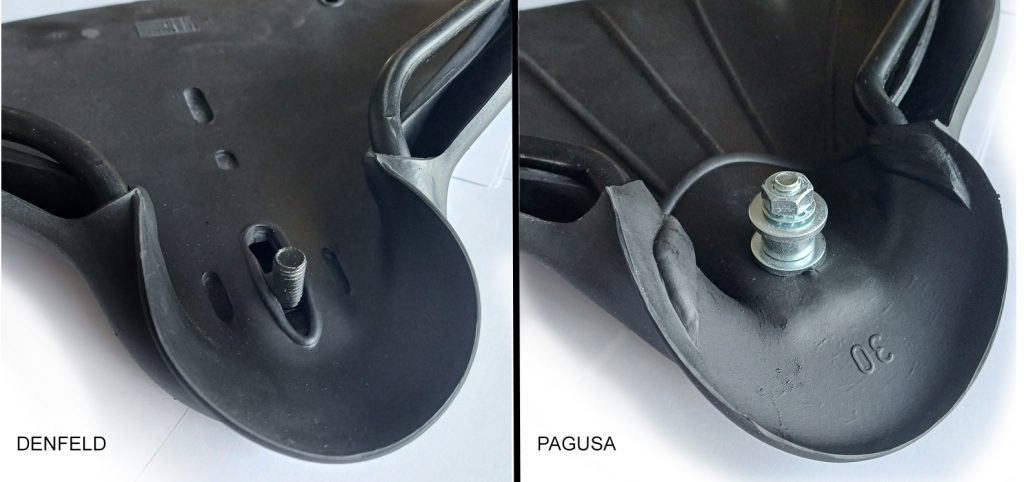

The Light & Horn Switch with P/N 61 31 8 048 162 does not properly fit on the Clutch Lever Assembly with P/N 32 72 2 072 112
The cause of this problem is clarified in the photos below.
The ends of the switch housing extend too far into the clutch lever assembly.
As soon as both parts are mounted together on the handlebar, the switch housing is pushed outwards, so that the switch housing can no longer be hooked behind the cam.
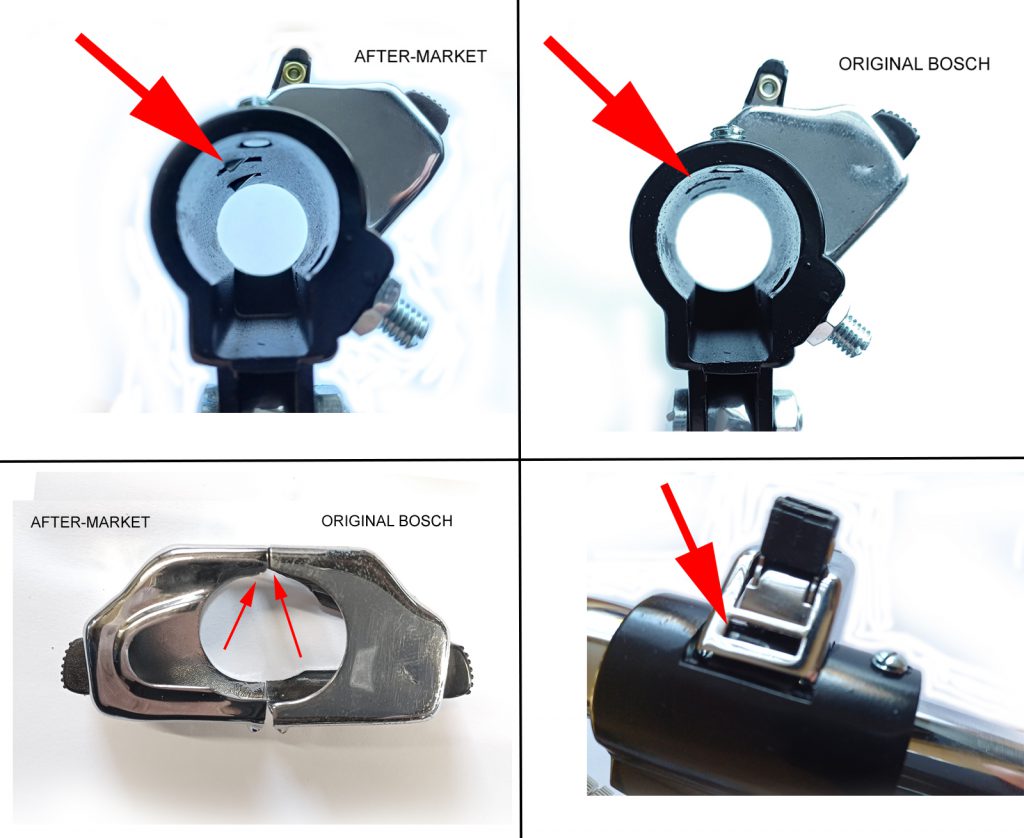
Here a comparison between an original Bosch and after-market switch housing on a /2 clutch assembly
